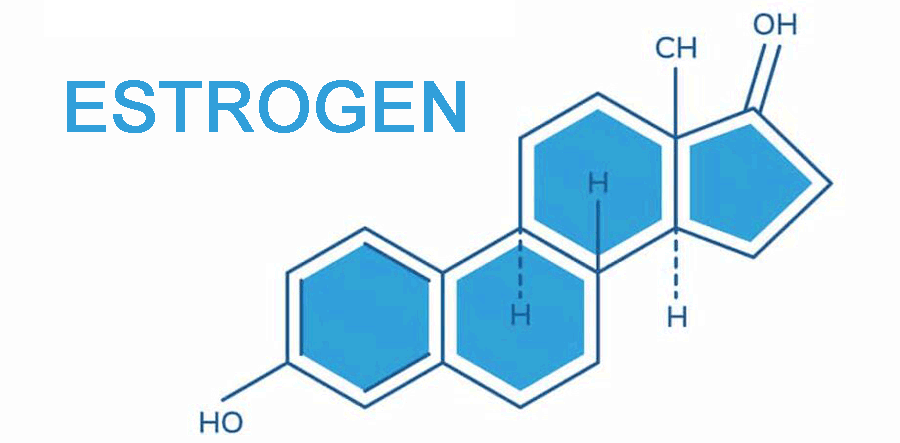As I transitioned into menopause years ago, I was happy to have been relieved of the monthly menstrual cycle and grateful to have experienced relatively minor symptoms. Hot flashes were not fun, but they weren’t all that bad either, especially when maintaining a sense of humor about them. My doctor never raised the possibility of hormone replacement therapy (HRT) based on findings from the Women’s Health Initiative (WHI) which deemed risks (stroke and breast cancer) greater than benefits (bone density).
I’ll confess that I knew very little about estrogen at the time. I was certainly aware that its presence governed my monthly cycles and likely contributed to sustaining a youthful appearance. But I had no sense that its loss would be implicated in my struggle to sustain adequate bone mineral density.
Estrogen stimulates bone building in several ways:
- It increases the efficacy of Vitamin D in promoting calcium absorption in the intestine and limits calcium loss through urine.
- It acts as a “switch manager” in the differentiation of mesenchymal stem cells. These cells reside in bone marrow and assume responsibility for production of adipocytes (which specialize in storing fat), cartilage (connective tissue), and osteoblast (bone-building cells). Estrogen tips the scales in favor of osteoblasts.
- It helps regulate parathyroid activity to ensure the proper levels of calcium, phosphorus, and Vitamin D in the blood.
- It increases production of Insulin-like Growth Factor 1 (IGF-1) which stimulates growth of all cell types.
- It lowers sclerostin levels which would otherwise dampen osteoblast activity.
Estrogen also works to keep a lid on bone resorption (a.k.a. demolition) activity. Osteoclasts secrete acid phosphatase to dissolve bone crystals. They trace their origin to hematopoietic (blood-oriented) stem cells located in the bone marrow. These cells can differentiate into red blood cells, immune response cells (T-Cells, dendritic cells, microphages), and osteoclasts. Elevated levels of inflammation and oxidative stress stimulates hematopoietic stem cell activity, which in turn lets loose the bone demolition team. Estrogen tamps this down by:
- Helping maintain a healthy gut biome and, thereby, reducing the risk of gut permeability. This action ensures proper absorption of essential vitamins and minerals and keeps toxins from entering the blood stream.
- Calming the immune response by limiting the presence of proinflammatory cytokines (IL-1, IL-6, and TNf-α) and RANKL, a messenger molecule that activates immune cells and osteoclasts.
- Stimulating mitochondrial production of glutathione, a powerful antioxidant.
- Minimizing Reactive Oxygen Species (ROS) and oxidative stress.
Beyond the bones, estrogen increases muscle mass and strength, improves the speed of muscle regeneration, protects against muscle damage, increases the collagen content of connective tissue, and decreases stiffness of tendons and ligaments. All of the foregoing promotes an overall level of fitness and reduces risk of injury. It also contributes to a health cholesterol panel by increasing HDL and decreasing LDL.
I wish I’d had the opportunity for a spirited discussion about HRT when I went through menopause. We now know that HRT risks differ depending on type, dose, duration of use, route of administration, timing of initiation, and use of progestogen. According to my naturopath, low dose, transdermal applications of bioidentical hormone carry far less risk than oral ingestion of synthetic hormone. Per the North American Menopause Society, the risk-benefit profile also improves for women within 10 years of menopause onset who have no contraindications for their use. Beyond age 60, the absolute risk of coronary heart disease, stroke, venous thromboembolism, and dementia make such treatment ill-advised.
It’s likely too late for me to do much about the foregone menopausal opportunity. But all is not lost. I simply have to work harder on diet and exercise to maintain a healthy gut biome, minimize inflammation and oxidative stress, and sustain good muscle tone.
A healthy lifestyle always seems to come back to diet and exercise, doesn’t it?
